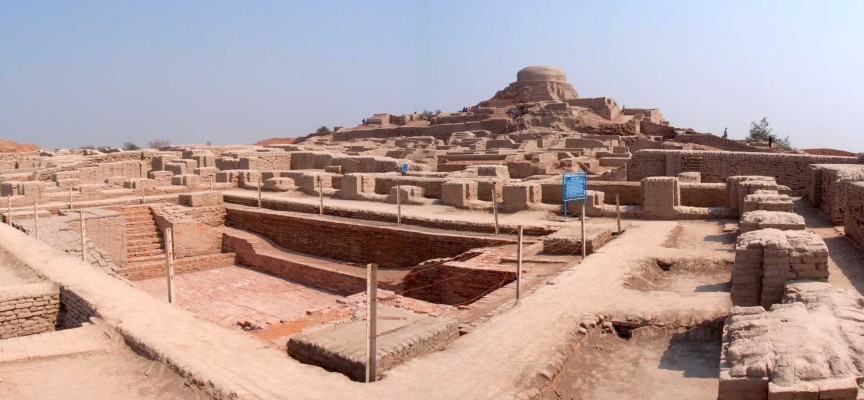Mohenjo-daro

Mohenjo-Daro is a historical marvel. A part of the Indus valley civilization, this ancient city is now a part of Larkana district located in the Sindh province of Pakistan.
The city was first discovered by archeologists in 1911. Excavations then regularly took place in the 1920’s and 1930’s, with final major digs taking place in 1950 and 1964.
The History of Mohenjo-Daro :
The city was inhabited in the third millennium BC and saw it’s heydays between 2,500 to 1,900 B.C.
According to archeologist Mr. Gregory Possehl, Mohenjo-Daro was among the most important cities in the Indus Valley. Spread over approximately 250 acres, the city had a series of mounds and a structure we today call the Great Bath.
The city was amazingly well structured for its time with a planned street grid and an intricate drainage system. There are multiple wells found in the city and almost all houses had a bathing area as well as drainage.
These facts clearly point to the fact that the people of this city were very good urban planners with skills in the control of water.
The People Are a Mystery :
Although there has been much interest and many excavations at the site, it is still not clear who these people were actually. “It’s pretty faceless,” says Gregory Possehl.
There are no palaces, temples, or monument, no noticeable central seat of government, not even proof of a king or queen.
What is evident is that these people were modest, orderly, and preferred cleanliness. Also evident is the fact that these people were traders as seals and weights were found during the excavations.
Although simple, the city is considered to be wealthy as a lot of artifacts such as ivory, lapis, carnelian, and gold beads have been found there.
The Great Bath
According to Possehl, The Great Bath is the only religiously significant structure at Mohenjo-Daro. It is actually a watertight pool which is situated on top of a mound of dirt and held in place with walls of baked brick. This Possehl adds, suggests an ideology that was based on cleanliness.
City of Mounds :
According to archaeologist Jonathan Mark Kenoyer of the University of Wisconsin, the mounds grew organically over time as the inhabitants kept building platforms and walls for their houses.
As mentioned earlier, there is no evidence of a governing individual which leads to people postulating that it could have been governed as a city-state.
Mysterious People with a Mysterious End :
Among the many uncertainties surrounding Mohenjo-Daro one is that of its demise. No one knows what happened to it.
Some suggest that the Indus changed course, hampering the agricultural economy and Mohenjo-Daro’s importance as a center of trade, but these are unproven hypothesis.
Whatever the reason behind its end, today Mohenjo Daro is a world heritage site and a must visit if you are in Pakistan and a history buff.
What an excellent account of The History of Mohenjo-Daro... I really like your throughout, educative post
thanks
Nice one 👍upvoted and followed you 🌟
thanks
great post
thanks
Actually, I wanted to write a post about this city too. Thank you
write good